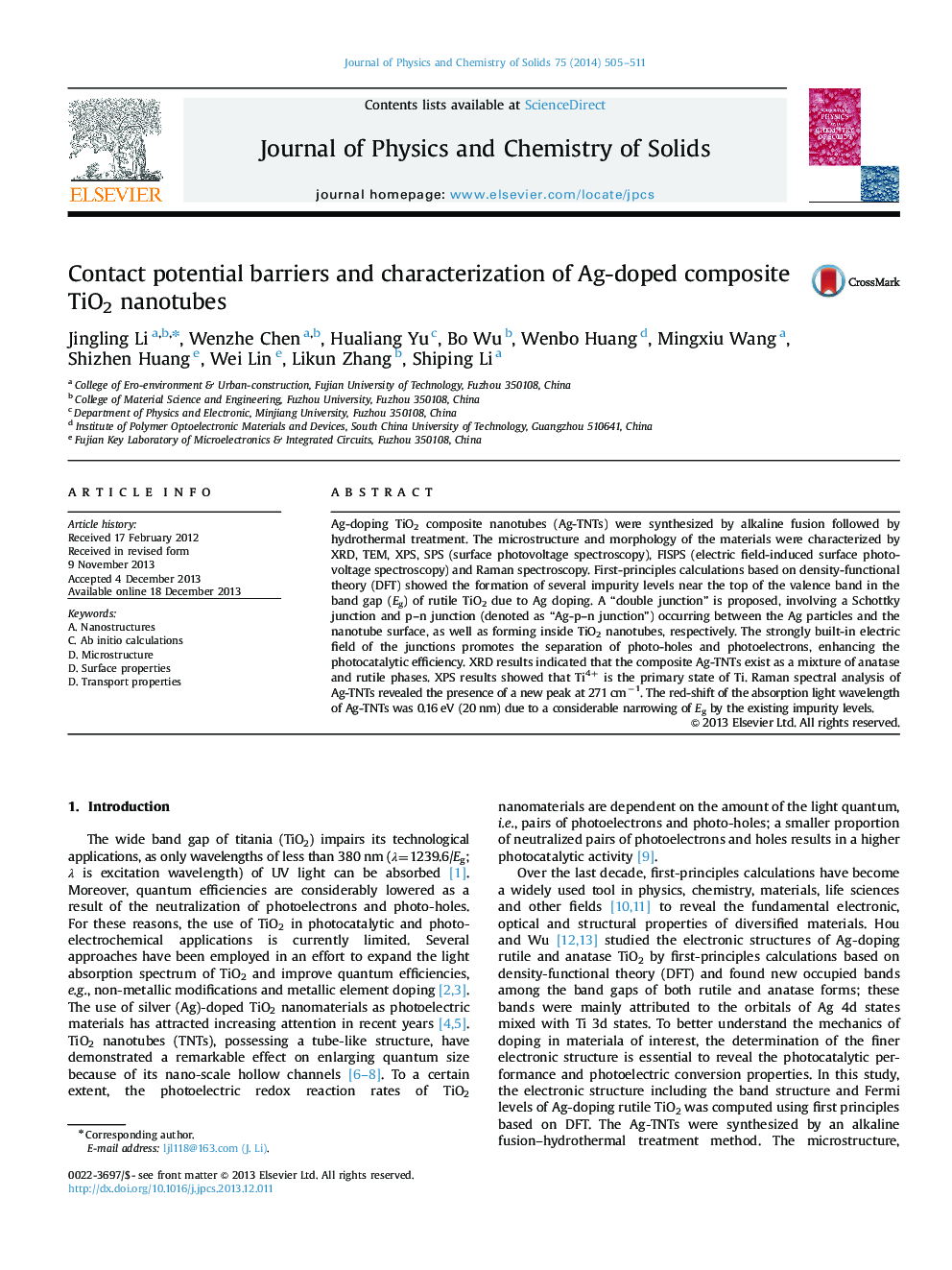| Article ID | Journal | Published Year | Pages | File Type |
|---|---|---|---|---|
| 1515867 | Journal of Physics and Chemistry of Solids | 2014 | 7 Pages |
•Ag–TiO2 nanotubes were synthesized under ambient atmosphere.•The electronic structures of Ag-doped TiO2 were calculated by first-principles.•We proposed the “double-junction” model at the surface of TiO2 nanotubes.•We analyzed the coexistence of Schottky and p–n junction at the surface of nanotubes.•“Double-junction” facilitated the separation of hole-electrons.
Ag-doping TiO2 composite nanotubes (Ag-TNTs) were synthesized by alkaline fusion followed by hydrothermal treatment. The microstructure and morphology of the materials were characterized by XRD, TEM, XPS, SPS (surface photovoltage spectroscopy), FISPS (electric field-induced surface photovoltage spectroscopy) and Raman spectroscopy. First-principles calculations based on density-functional theory (DFT) showed the formation of several impurity levels near the top of the valence band in the band gap (Eg) of rutile TiO2 due to Ag doping. A “double junction” is proposed, involving a Schottky junction and p–n junction (denoted as “Ag-p–n junction”) occurring between the Ag particles and the nanotube surface, as well as forming inside TiO2 nanotubes, respectively. The strongly built-in electric field of the junctions promotes the separation of photo-holes and photoelectrons, enhancing the photocatalytic efficiency. XRD results indicated that the composite Ag-TNTs exist as a mixture of anatase and rutile phases. XPS results showed that Ti4+ is the primary state of Ti. Raman spectral analysis of Ag-TNTs revealed the presence of a new peak at 271 cm−1. The red-shift of the absorption light wavelength of Ag-TNTs was 0.16 eV (20 nm) due to a considerable narrowing of Eg by the existing impurity levels.
Graphical abstractSpace charge layer formation between Ag–TiO2 composite nanotubes interface.Figure optionsDownload full-size imageDownload as PowerPoint slide
